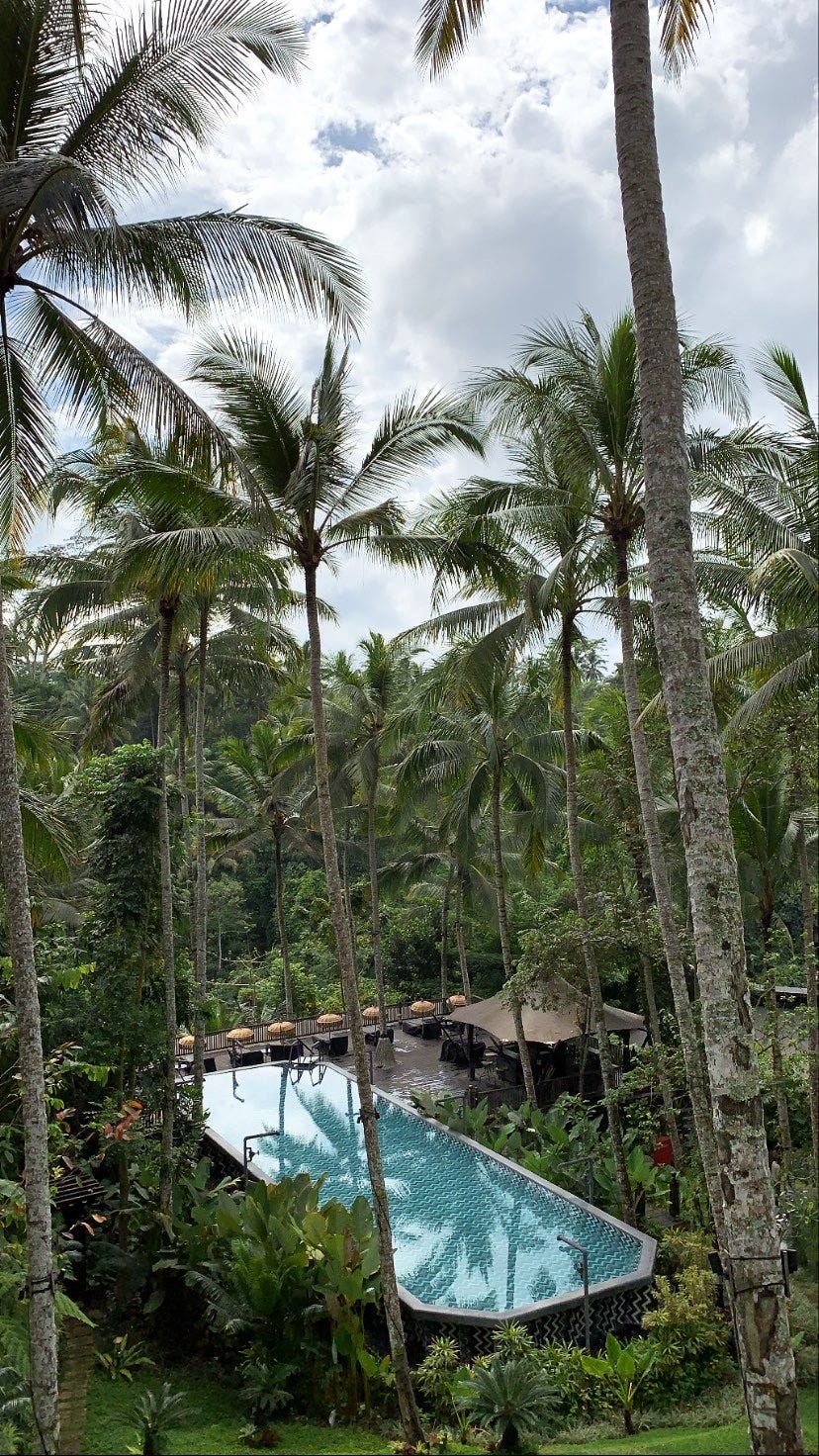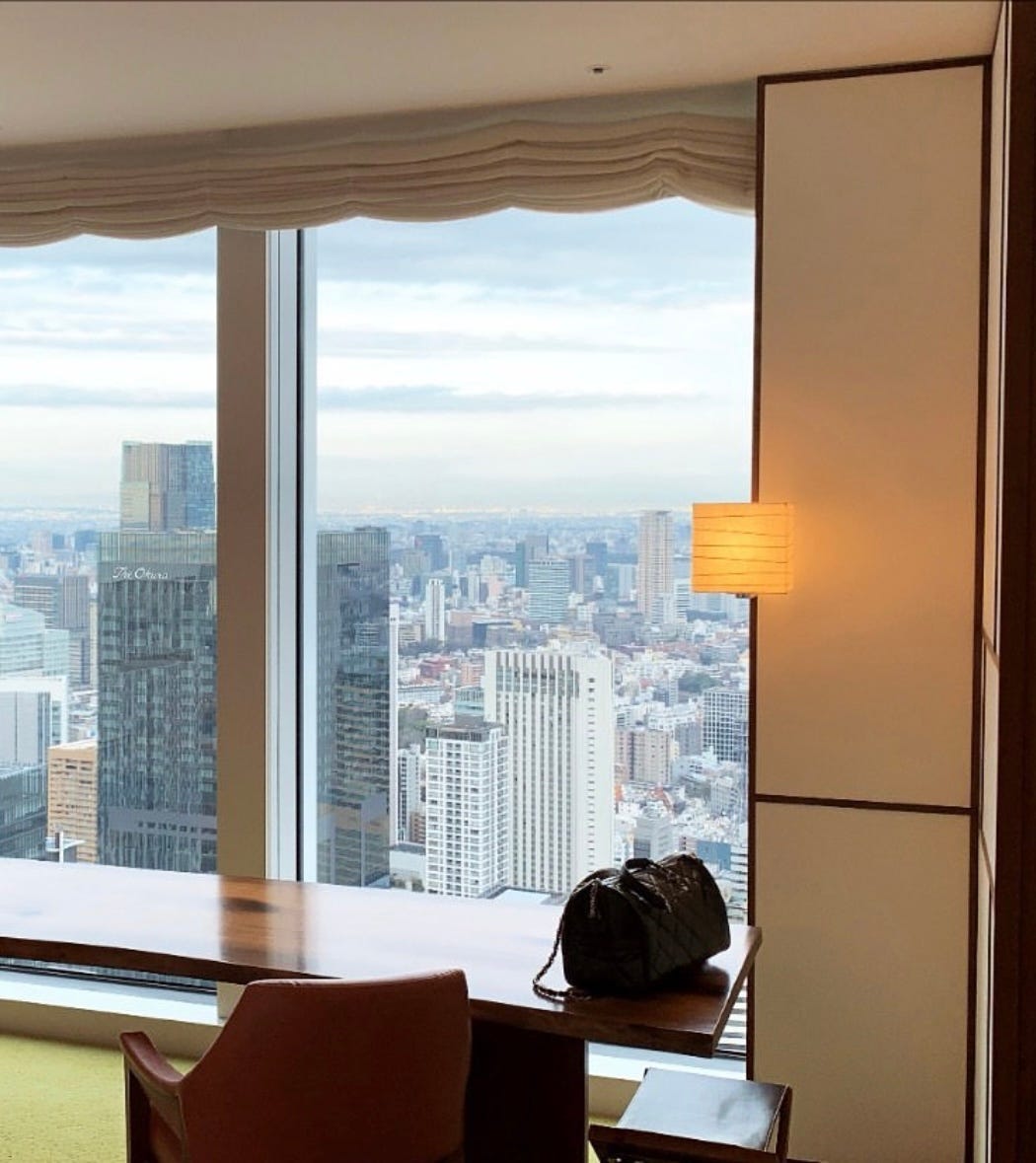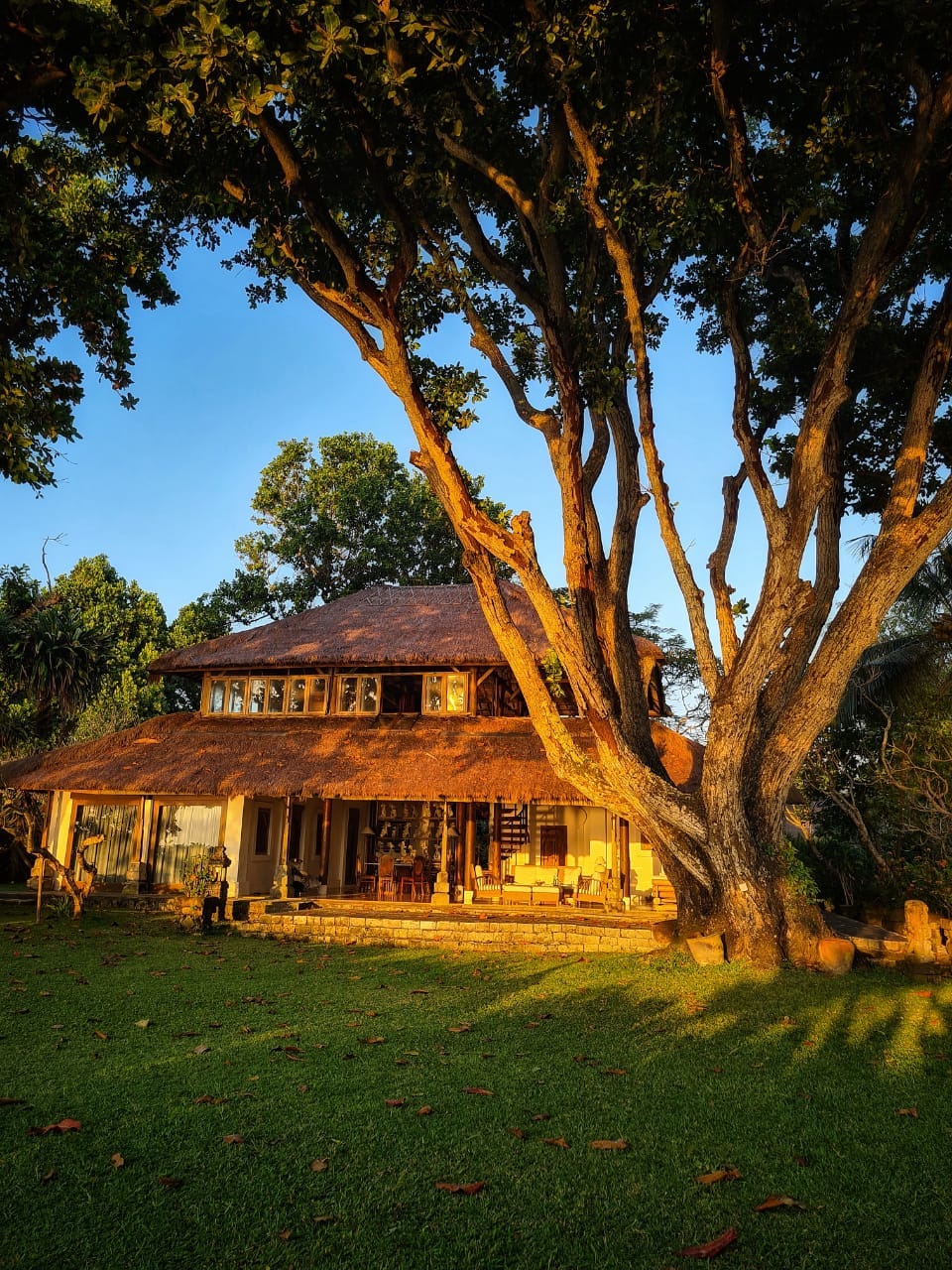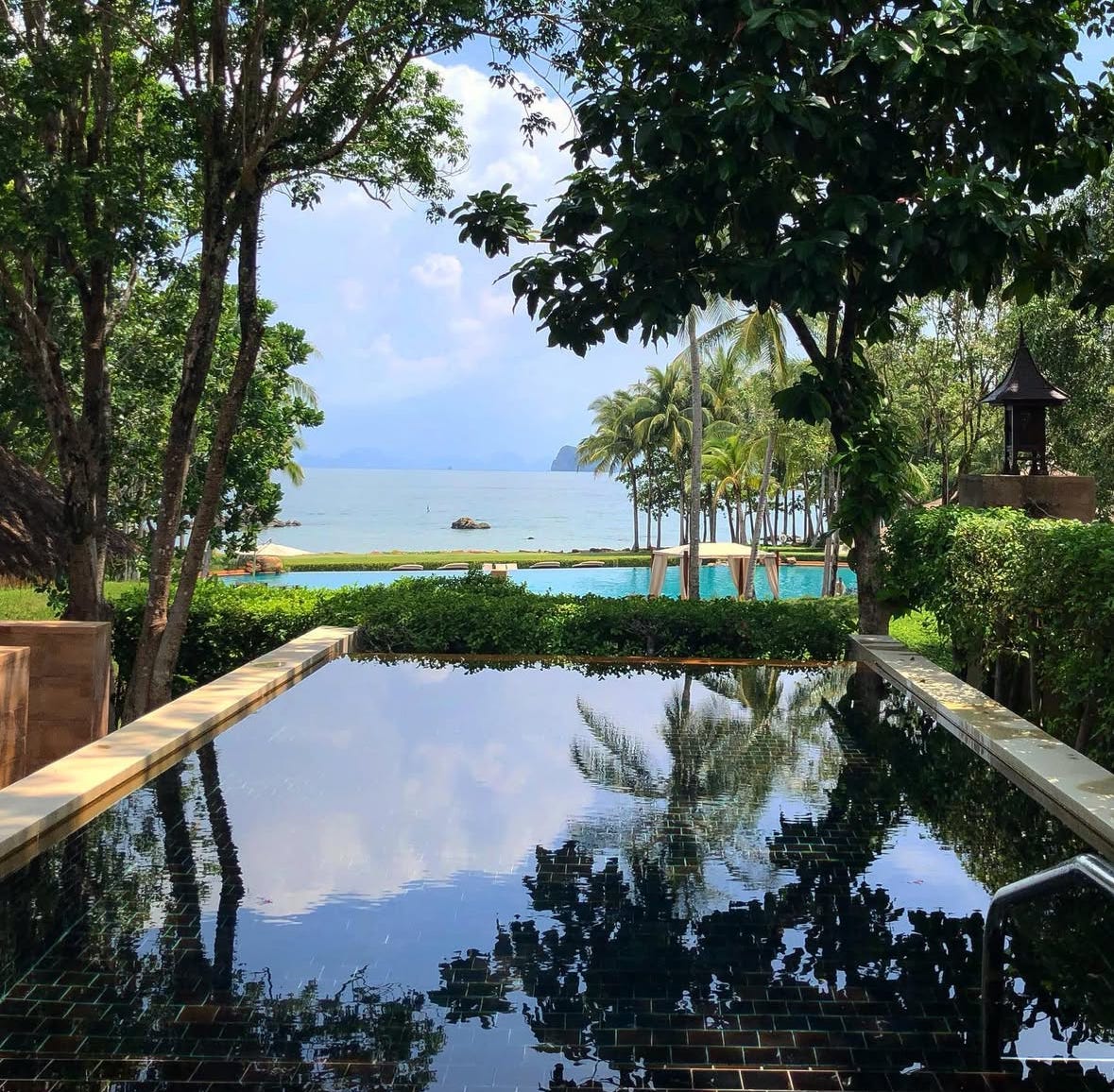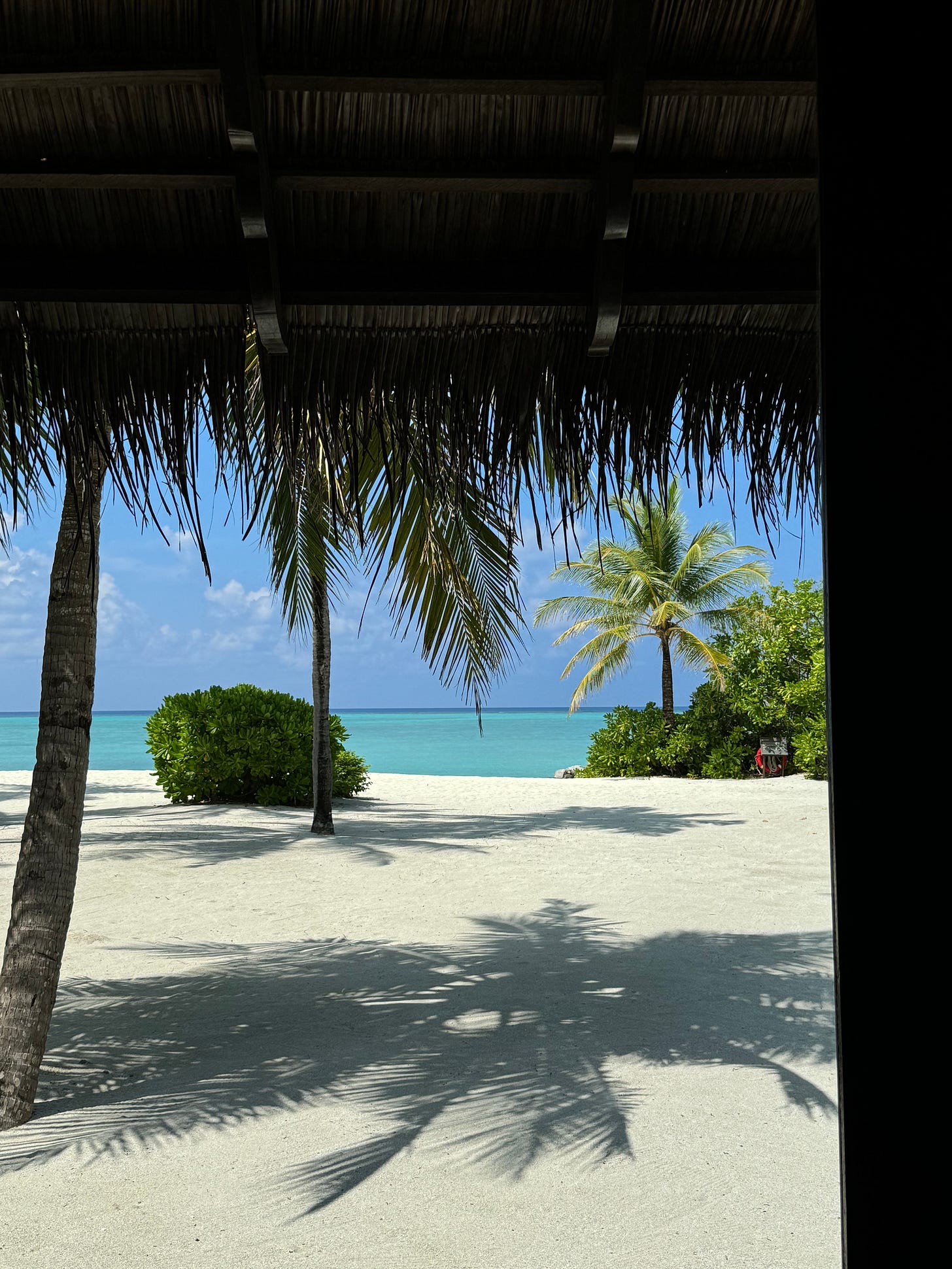As the year draws to a close, I find myself reflecting on some of the most remarkable hotels I’ve had the privilege of staying at across Asia. Each property offers its own unique allure, from exceptional service to striking design and innovative architecture. It’s captivating to uncover the stories behind these hotels: the thought process behind the choice of brand, the carefully curated location, and the vision of the designer who brings it all to life.
With that in mind, I’m thrilled to present Fafa’s Top 10 Hotels in Asia, a curated list of unforgettable stays that left a lasting impression. I hope you’ll enjoy reading about these extraordinary properties as much as I enjoyed exploring them. So, without further ado, here are my Top 10 Picks.
Amankila
Founded by Indonesian hotelier Adrian Zecha, Amankila opened in 1992 in Karangasem, Bali, overlooking the Lombok Strait. It was the third Aman property, following Amanpuri in Phuket and Amandari in Ubud. Designed by the acclaimed Ed Tuttle, who also crafted Amanjiwo in Yogyakarta and Amanbagh in India, Amankila reflects his signature minimalist style, blended with traditional Balinese elements such as alang-alang thatched roofs and structures reminiscent of Balinese temples. The result is a perfect fusion of modern luxury and cultural authenticity.
The dining experience was outstanding, with fresh, high-quality ingredients, and the welcome drink was particularly memorable. However, there were a few drawbacks. The garden maintenance seemed to be lacking, possibly due to my visit during the pandemic. The daytime view was disrupted by nearby oil tankers, disrupting the otherwise tranquil scenery. And while the rooms are timeless, they could use some refreshing to match the expectations of today’s luxury travelers.
Given these factors, I’ve placed Amankila at number 10 on my list. It’s an exceptional property with immense potential, but there’s room for refinement.
Six Senses Kaplakanya, Bodrum, Turkiye
Opened in 2018, Six Senses Kaplankaya is a blend of modern design and natural beauty, set along Turkey’s serene Aegean coastline. The resort was designed by architect Carlos Ferrater, who seamlessly integrated the region’s rich history and stunning landscapes into a contemporary, eco-friendly sanctuary. The minimalist yet luxurious villas, with their expansive views and natural materials, reflect the brand’s commitment to sustainability. With an emphasis on wellness and organic living, Six Senses Kaplankaya not only elevates the guest experience but also respects its surroundings, making it a standout destination for those seeking rejuvenation.
Spanning across a vast, secluded cliffside, the resort is one of the largest I’ve visited, located an hour’s drive from Bodrum airport. Its remote setting is its charm, offering breathtaking views of the landscape. The standout feature is the 10,000 sqm spa, complete with a Turkish hammam, spinning room, outdoor facilities, and thermal pools. However, the service still feels a bit unpolished, with occasional communication gaps and the majority of the staff lacking English proficiency. Despite these minor setbacks, Six Senses Kaplankaya remains one of the most refreshing resorts I’ve experienced.
The Ritz Carlton Kyoto
Opened in 2014, The Ritz-Carlton Kyoto is a blend of traditional Japanese design and modern luxury, located along the Kamogawa River. Designed by Peter Remedios Design Studio, the hotel integrates Kyoto’s cultural heritage with contemporary elegance. Its concept is inspired by five principles: Utage (festivity), Seido (serenity and movement), Miyabi (elegance), Hana (splendor), and Nagomi (harmony). The property features Zen gardens, a stunning three-story waterfall, and over 400 works by local Kyoto artists. With its understated luxury and impeccable service, the hotel offers a refined sanctuary that honors the city’s history while providing a modern, elevated experience.
The property is aesthetically pleasing, with its thoughtful design and serene ambiance creating a really nice environment. The staff was courteous and attentive, always eager to assist. However, despite their friendliness, the overall service didn’t quite reach the exceptional standard one might expect from such a luxury brand. While the food was pleasant, it didn’t leave a lasting impression, and the dining experience felt more routine than extraordinary.
Capella Ubud
Capella Ubud is a luxurious retreat tucked deep within Bali’s lush rainforest, offering a one-of-a-kind escape. Opened in 2018 and designed by the acclaimed Bill Bensleyimaginative design with intricate Balinese craftsmanship. Each tent features hand-carved details, vintage-inspired furnishings, and private saltwater pools.
From the moment you arrive, you feel fully immersed in the jungle. The service is attentive, though it felt less polished compared to the Four Seasons, likely because the property was still relatively new during my 2020 visit. That said, the design and concept are truly surreal—a remarkable fusion of local culture and exquisite craftsmanship. Guests can enjoy complimentary yoga and afternoon tea. However, the steep stairs can be challenging for older guests, especially during rain. Despite this, Capella Ubud remains one of the most breathtakingly designed properties I’ve ever stayed at.
NIHI Sumba
Nihi Sumba, a secluded luxury resort on the island of Sumba, Indonesia, combines rustic charm with sophisticated design. Founded by Chris Burch and designed by Claude and Petra Graves, the resort blends seamlessly into its natural surroundings, with villas crafted from local materials and offering stunning ocean views. Deeply committed to sustainability, Nihi Sumba supports the Sumba Foundation, which focuses on improving healthcare, education, and infrastructure for the island’s communities. This focus on both luxury and social responsibility makes it a standout destination, offering not only a lavish retreat but also a meaningful contribution to the island’s development.
Getting to Nihi Sumba requires a bit of effort—flying from Bali to a small propeller plane and then driving for about 1 hour and 45 minutes from Tambolaka Airport. Once there, it truly feels like an eco-luxury escape, with staff largely comprised of students from the Sumba Foundation. The resort offers a variety of activities, including its own chocolate factory, and many things to explore. However, while the experience is rich in character, I found the dining and service to be a bit less polished compared to other properties I’ve visited.
Four Seasons Jimbaran Bay, Bali
Four Seasons Resort Jimbaran Bay in Bali, opened in 1993, blends traditional Balinese design with modern luxury. Designed by Indonesian firm GKA alongside landscaper Made Wijaya and renowned interior designer Jaya Ibrahim, the resort features spacious villas and beachfront pavilions crafted from local materials, each with stunning ocean views, private pools, and open-air bathrooms. Known for its exceptional service, it offers exquisite dining at Sundara and Taman Wantilan, as well as wellness treatments at the Sacred River Spa. With its prime beach location and access to cultural and recreational activities, the resort offers the perfect balance of luxury, tranquility, and Balinese charm.
The resort feels timeless, surrounded by lush vegetation. Service is impeccable—attentive and always with a smile. The design beautifully captures the essence of Bali, with a highlight being the newly refurbished Sacred River Spa, housed in its own pavilion, offering an authentic Balinese spa experience. However, the dining experience falls short; most of the restaurant outlets are pleasant but lack the standout quality expected from such a high-end property.
Andaz Tokyo Toranomon Hills
Andaz Tokyo Toranomon Hills is a stylish urban retreat that masterfully blends contemporary design with Japanese tradition. Located in the heart of Tokyo’s Toranomon district, the hotel occupies the top floors of the iconic Toranomon Hills tower, offering breathtaking panoramic views of the city. Designed by Tony Chi and Shinichiro Ogata, the interiors fuse modern luxury with Japanese aesthetics, incorporating elegant wood, stone, and washi-paper accents.
I was impressed with the early check-in—our flight landed at 7 AM, and upon arrival, the receptionist handed us the key right away, a gesture I always appreciate when hotels aren't fully booked and the let the guests to have early check-in. Andaz Tokyo also offers a complimentary minibar with non-alcoholic beverages, plus from 6:00 PM to 8:00 PM, they serve a selection of beverages and canapés in the lounge, which I thought was a lovely touch. The pool area exudes a calming zen atmosphere. However, the service didn’t quite meet the usual high standards of traditional Japanese hospitality—it felt a bit more detached and lacked the warmth I was expecting.
Wantilan Lama, Sanur, Bali
Located within the Batujimbar Estate, this boutique accommodation is a true gem and design masterpiece, shaped by the vision of several world-renowned designers. The main cottage, Wantilan, was created by Geoffrey Bawa, the father of tropical modernism, while the stunning landscape was crafted by legendary tropical gardener Made Wijaya. Bill Bensley designed the pool, complete with a hidden cave, and several of the cottages. The location is simply breathtaking, offering panoramic views of Mt. Agung at sunrise and Nusa Penida Island in the distance.
Service here is flawless, with staff attuned to your every preference, making you feel as though you’re staying in a private home. Each morning, the ‘ibu’ performs a Balinese ritual, immersing guests in the authentic culture of the island. The lush vegetation, exquisite craftsmanship, and captivating artwork throughout the property are truly exceptional, while its secluded yet central location makes it a place you’ll never want to leave.
Phulay Bay, A Ritz Carlton Reserve, Krabi, Thailand
Phulay Bay, A Ritz-Carlton Reserve, located in Krabi, Thailand, opened in 2009 and was designed by renowned Thai architect Lek Bunnag, with landscape design by Bill Bensley. The resort blends traditional Thai elegance with modern luxury, offering a truly unique experience.
What makes Phulay Bay stand out is its unparalleled service, privacy, and exclusivity. Set in one of Thailand's most scenic coastal locations, the resort’s open-plan villas and pavilions, many with private pools and unobstructed Andaman Sea views, provide the perfect sanctuary. A standout moment was the exceptional service from our butler, Yid, who ensured every need was met. The thoughtful attention to detail from the housekeeping team was also remarkable—like when I left my book open, and upon returning, I found a local-crafted bookmark placed inside. These personalized touches elevate the experience, proving why Phulay Bay rightfully earns its spot at number two.
One&Only Reethi Rah, The Maldives
Opened in 2005, One&Only Reethi Rah quickly set the standard for luxury in the Maldives, located on a stunning octopus-shaped island in the North Malé Atoll. With 6 km (3.7 mi) of pristine coastline, the resort features secluded white-sand coves and serene turquoise bays, offering unparalleled privacy in its 128 villas.
Designed by the world-renowned architect Jean-Michel Gathy, the resort lives up to its name, "Reethi Rah," meaning “Beautiful Island” in Dhivehi. Gathy’s vision seamlessly blends luxury, space, and privacy, with meticulous attention to every detail, from the architecture and interiors to the landscaped surroundings of each villa.
Where other properties may have their drawbacks, One&Only Reethi Rah truly checks every box. It covers all the bases—luxury, service, design—making it, without question, the best resort I’ve ever stayed at. For the full review, read here.
I hope this curated journey through some of Asia’s most remarkable hotels has given you a sense of what makes each of them so extraordinary. These are not just places to stay but destinations that leave a lasting impression, blending luxury, design, and a deep connection to their surroundings. Thank you!






